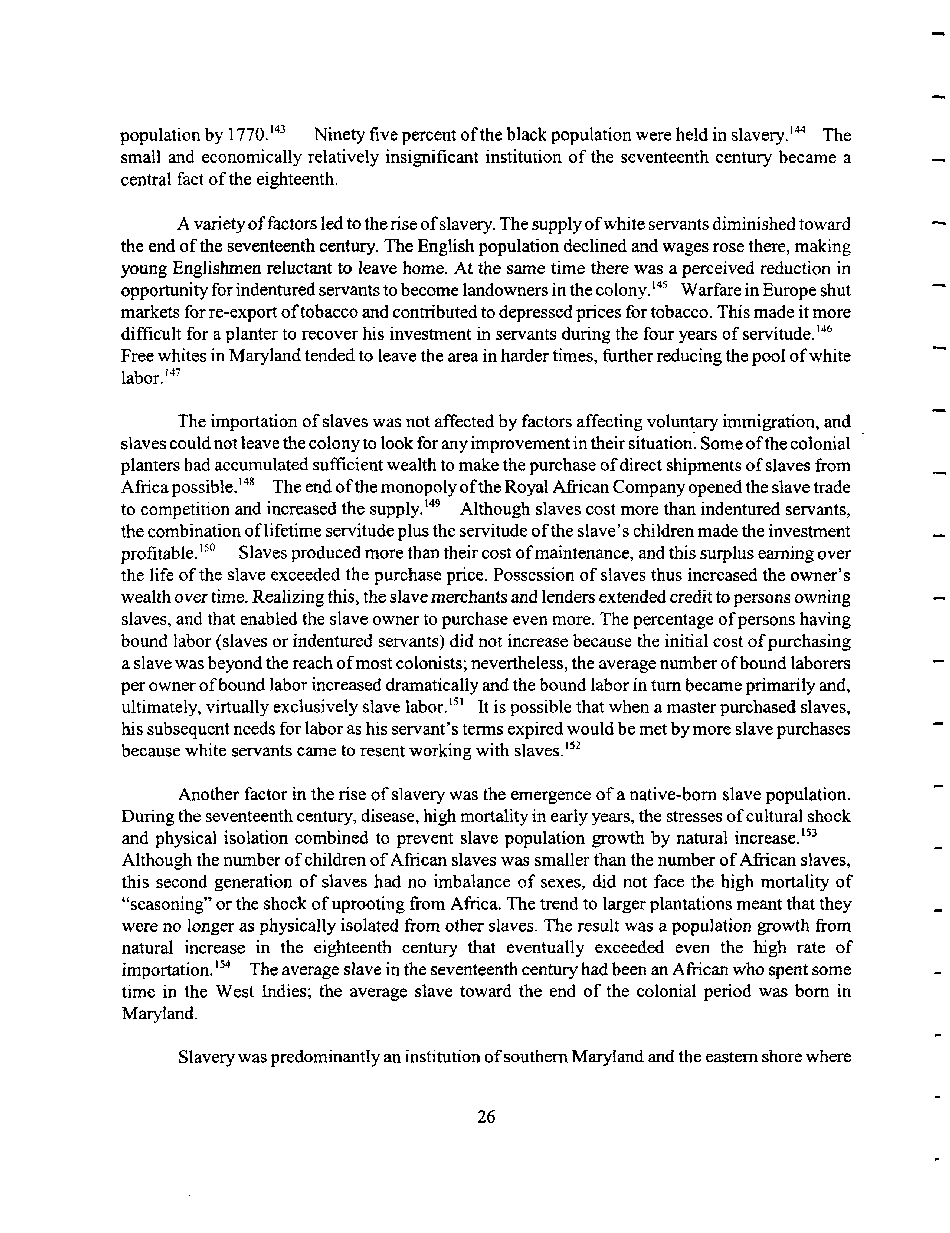|
population by 1770.143 Ninety five percent of the black population were held in slavery.144 The
small and economically relatively insignificant institution of the seventeenth century became a
central fact of the eighteenth.
A variety of factors led to the rise of slavery. The supply of white servants diminished toward
the end of the seventeenth century. The English population declined and wages rose there, making
young Englishmen reluctant to leave home. At the same time there was a perceived reduction in
opportunity for indentured servants to become landowners in the colony.145 Warfare in Europe shut
markets for re-export of tobacco and contributed to depressed prices for tobacco. This made it more
difficult for a planter to recover his investment in servants during the four years of servitude.146
Free whites in Maryland tended to leave the area in harder times, further reducing the pool of white
labor.147
The importation of slaves was not affected by factors affecting voluntary immigration, and
slaves could not leave the colony to look for any improvement in their situation. Some of the colonial
planters had accumulated sufficient wealth to make the purchase of direct shipments of slaves from
Africa possible.148 The end of the monopoly of the Royal African Company opened the slave trade
to competition and increased the supply.149 Although slaves cost more than indentured servants,
the combination of lifetime servitude plus the servitude of the slave's children made the investment
profitable. 15° Slaves produced more than their cost of maintenance, and this surplus earning over
the life of the slave exceeded the purchase price. Possession of slaves thus increased the owner's
wealth over time. Realizing this, the slave merchants and lenders extended credit to persons owning
slaves, and that enabled the slave owner to purchase even more. The percentage of persons having
bound labor (slaves or indentured servants) did not increase because the initial cost of purchasing
a slave was beyond the reach of most colonists; nevertheless, the average number of bound laborers
per owner of bound labor increased dramatically and the bound labor in turn became primarily and,
ultimately, virtually exclusively slave labor.151 It is possible that when a master purchased slaves,
his subsequent needs for labor as his servant's terms expired would be met by more slave purchases
because white servants came to resent working with slaves.152
Another factor in the rise of slavery was the emergence of a native-bom slave population.
During the seventeenth century, disease, high mortality in early years, the stresses of cultural shock
and physical isolation combined to prevent slave population growth by natural increase.153
Although the number of children of African slaves was smaller than the number of African slaves,
this second generation of slaves had no imbalance of sexes, did not face the high mortality of
"seasoning" or the shock of uprooting from Africa. The trend to larger plantations meant that they
were no longer as physically isolated from other slaves. The result was a population growth from
natural increase in the eighteenth century that eventually exceeded even the high rate of
importation.154 The average slave in the seventeenth century had been an African who spent some
time in the West Indies; the average slave toward the end of the colonial period was bom in
Maryland.
Slavery was predominantly an institution of southern Maryland and the eastern shore where
26
�
|

